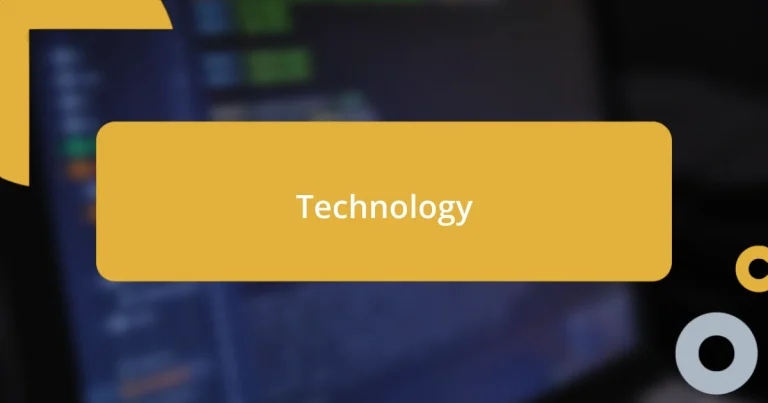Key takeaways:
- Code reviews foster collaboration and learning, creating a supportive environment for constructive feedback that enhances team dynamics and individual growth.
- Effective techniques for code reviews include the use of checklists, maintaining a positive atmosphere, and encouraging back-and-forth dialogue to deepen understanding.
- Common pitfalls in code reviews involve rushing the process, focusing too much on personal coding preferences over functionality, and failing to balance criticism with praise to create a motivating environment.
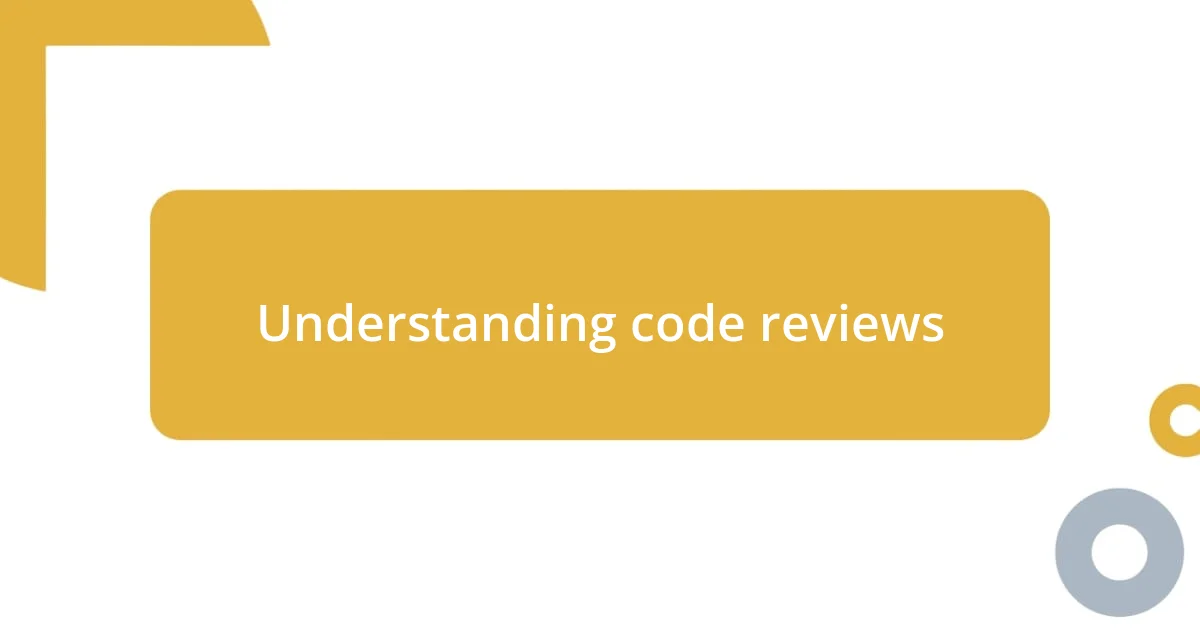
Understanding code reviews
Code reviews are more than just a checkpoint in the development process; they are an opportunity for collaboration and learning. I remember the first time I experienced a thorough code review. I felt nervous, thinking my code would be scrutinized harshly, but instead, I found a supportive environment where my peers offered constructive feedback. It was a revelation to see how shared knowledge can elevate the whole team’s coding skills.
Have you ever found a small oversight in your own code after someone pointed it out? That’s the beauty of code reviews: they act like a fresh pair of eyes on your work. Often, I’ve noticed how someone else’s perspective can reveal potential flaws or areas for improvement that I completely overlooked. It’s a humbling experience that sharpens your own coding abilities and encourages a culture of collective accountability.
Moreover, I’ve come to realize that code reviews foster relationships. Each review session feels like a blend of mentorship and camaraderie, as individuals share insights and best practices. I often wonder: what if every code review was seen as a chance to grow as both a developer and a teammate? This shift in mindset transforms the process into a powerful tool for personal and professional development.
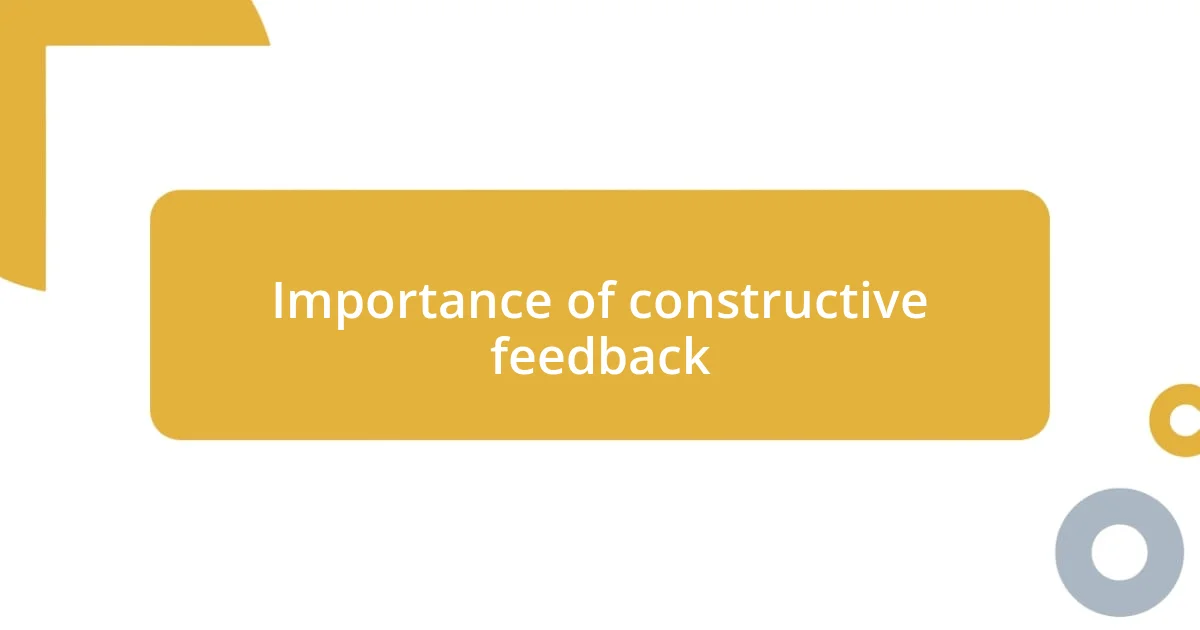
Importance of constructive feedback
Constructive feedback is the lifeblood of effective code reviews. I remember one time when I received feedback that went beyond just identifying issues; it provided direction for my future projects. It was as if someone lit a path for me, transforming confusion into clarity. This kind of feedback doesn’t just fix problems; it builds a developer’s confidence and propels growth.
Here are a few reasons why constructive feedback is crucial in the coding process:
- Enhances Learning: It turns mistakes into learning opportunities, allowing us to grasp concepts that might be new to us.
- Fosters Team Collaboration: Sharing knowledge strengthens team bonds, making everyone feel like they’re part of a collective effort.
- Encourages Open Communication: It creates an environment where sharing ideas and concerns becomes a norm, rather than a fear-inducing task.
- Promotes Continuous Improvement: Constructive criticism motivates us to refine our skills, keeping us on a path of constant development.
Through these experiences, I’ve witnessed firsthand how constructive feedback not only elevates one’s code quality but also nurtures a supportive team atmosphere. It’s amazing how a few well-chosen words can resonate deeply, sparking enthusiasm and loyalty within a team.
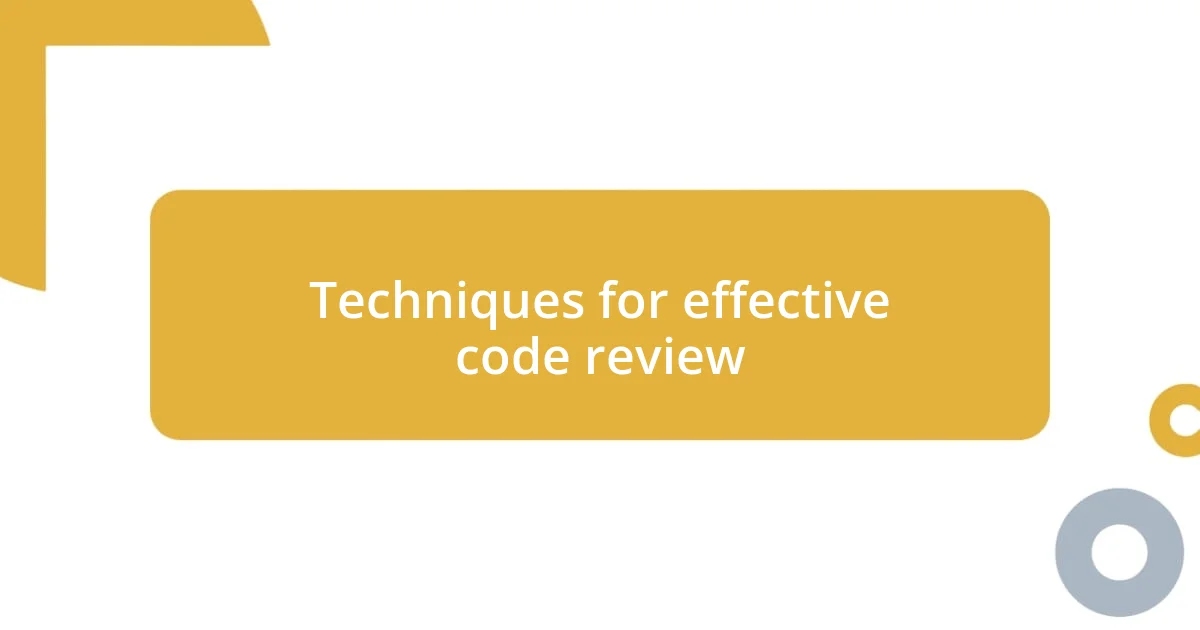
Techniques for effective code review
Effective code reviews hinge on a few key techniques that I’ve found to enhance the experience significantly. One strategy is to adopt a clear checklist or set of criteria before diving into the review process. I recall the first time I used a checklist; it streamlined my focus and ensured that I didn’t miss critical elements, such as style guidelines or potential bugs. It felt like having a roadmap, guiding me through the sometimes overwhelming landscape of someone else’s code.
Another crucial technique is fostering a positive atmosphere during reviews. I remember a specific instance where we were all working late to meet a deadline. Instead of the usual stress, we turned our review sessions into mini-celebrations of problem-solving. Every issue found was met with, “Great catch!” or “Let’s figure this out together!” This positive reinforcement not only motivated me but also made the code review process enjoyable. It shifted our focus from merely identifying problems to collectively finding innovative solutions.
Furthermore, engaging in a back-and-forth dialogue during reviews can be powerful. I love when the review feels like a conversation rather than a quick critique. For instance, when I discuss my thought process behind a coding decision, it often leads to deeper insights from my peers. It’s in these discussions that true collaboration shines; sometimes, their alternative perspectives transform my understanding entirely, and I walk away inspired. The interplay of ideas fosters a learning environment that benefits the whole team.
| Technique | Description |
|---|---|
| Checklists | Use a set of criteria to ensure that all essential aspects of the code are reviewed. |
| Positive Atmosphere | Create a supportive environment that encourages collaboration and reduces stress. |
| Dialogue | Encourage back-and-forth conversations to deepen understanding and spark new ideas. |
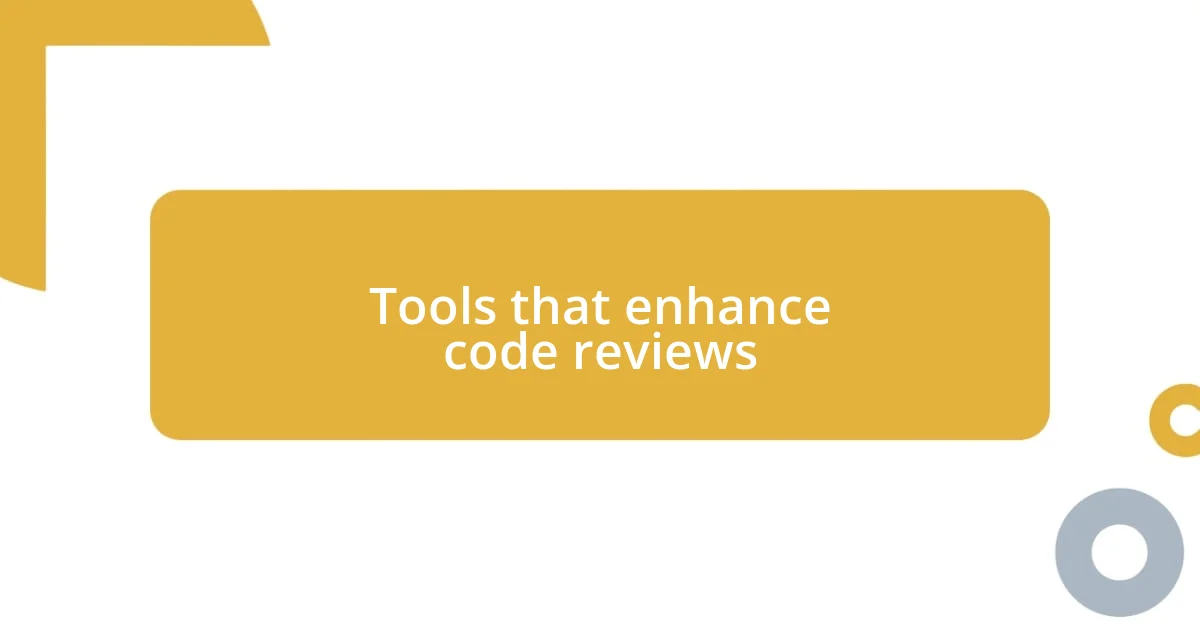
Tools that enhance code reviews
When it comes to tools that enhance code reviews, I can’t help but reflect on how powerful version control systems, like Git, have been in my own experience. These platforms not only keep track of changes but also allow for seamless collaboration among team members. Every time I push a feature branch for review, I feel a sense of trust knowing that my team can easily see the progression of my work and provide contextually relevant feedback.
Then there’s the use of code review tools, such as GitHub or Bitbucket. I vividly remember my first time using GitHub’s pull request feature; it revolutionized how I approached feedback. The ability to comment on specific lines made discussions incredibly focused. It felt like having a conversation right on the code itself, which often led me to better understand why certain changes were necessary and how to improve my future contributions.
Lastly, automated code review tools like SonarQube have been a game-changer for me. The first time I integrated it into my workflow, I was both excited and a bit intimidated. It automatically flagged potential issues, allowing me to address them upfront. This proactive approach not only saved time during manual reviews but also boosted my confidence, knowing that I was catching errors early. Have you ever had a moment when a tool made a task feel less daunting? For me, that was it; I realized that well-designed tools could enhance not just the efficiency of the review process, but also the overall quality of the code.
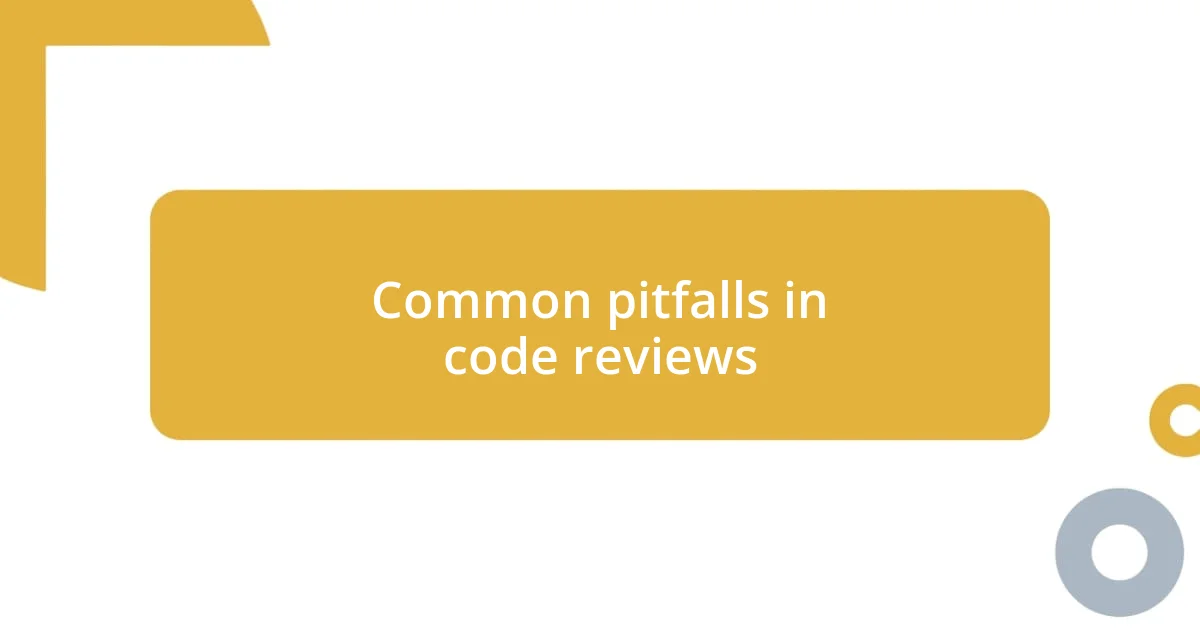
Common pitfalls in code reviews
One pitfall I’ve encountered in code reviews is rushing through the process. Early in my career, I was eager to provide feedback quickly, believing speed demonstrated my commitment. However, I quickly learned that this habit often led to overlooking critical errors or design flaws. Have you ever felt the pressure to wrap things up quickly? I found that taking a moment to breathe and reflect before responding allowed my thoughts to crystallize and improved the quality of my feedback significantly.
Another issue that can creep into code reviews is the tendency to focus too heavily on personal coding preferences rather than the actual functionality of the code. I remember a time when I fixated on style issues in a colleague’s work, ignoring more important functional concerns. This experience taught me that while style matters, the primary goal should be code quality and efficiency. It’s essential to prioritize substantial feedback—after all, has there ever been a perfect coding style?
Lastly, I’ve noticed that some reviewers fail to balance their critiques with praise. In one memorable review session, a colleague pointed out my code’s strengths before diving into suggestions for improvement. It wasn’t just flattering; it made me more receptive to the feedback. I’ve realized that balancing praise with constructive criticism creates a more motivating environment, transforming a potentially awkward interaction into an engaging dialogue. It raises the question: why not celebrate successes during the review process as much as we learn from mistakes?
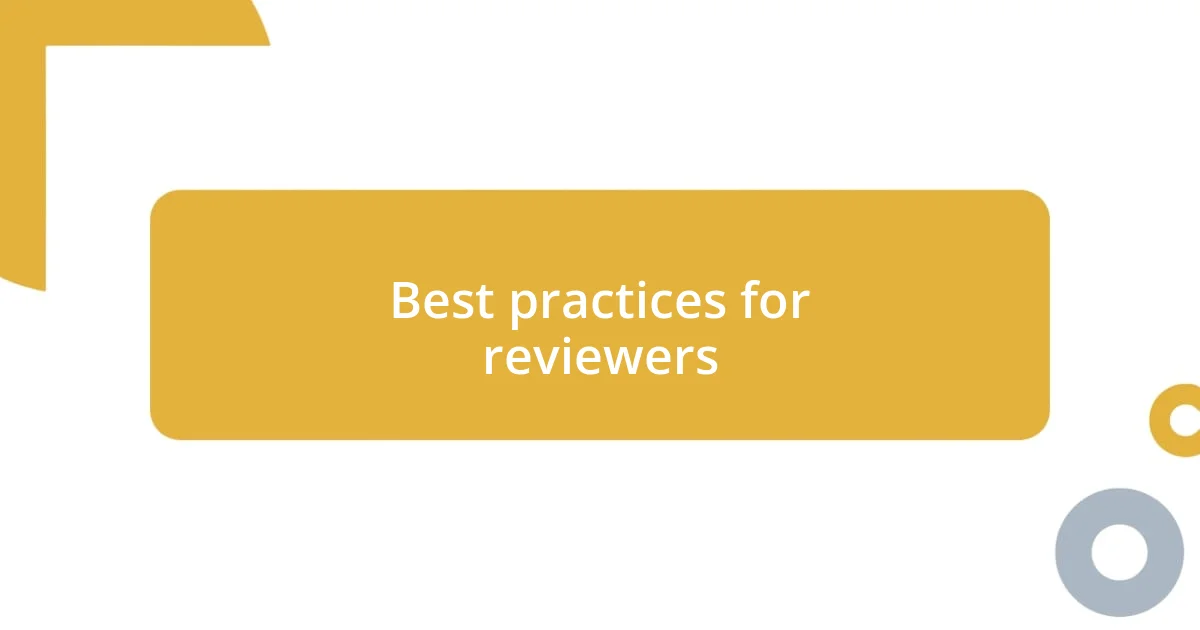
Best practices for reviewers
Best practices for reviewers include approaching the process with empathy. Early in my career, I remember reviewing a colleague’s code that was packed with great ideas but poorly executed. Instead of simply pointing out the flaws, I took the time to understand their approach and intentions. This not only fostered a positive atmosphere but also made my feedback feel more meaningful. Have you ever experienced a moment when you felt seen and understood in your own work? That’s the kind of environment we should strive for during reviews.
Another essential aspect is to be thorough but maintain a focus on the bigger picture. I’ve noticed that diving into minor details can distract from the overarching goals of the project. Once, while reviewing a substantial feature, I started nitpicking on insignificant formatting errors. It wasn’t until a teammate gently reminded me to consider the overall functionality that I refocused my energy on providing valuable insights. It made me wonder: why get bogged down by small details when we could elevate the entire project instead?
I’ve also found that asking open-ended questions can significantly enhance the review process. Instead of just stating what I think could be improved, I often pose questions like, “What were your thoughts behind this implementation?” This not only encourages discussion but also allows the original author to reflect on their choices. During one review, this approach led to an enlightening conversation that sparked ideas for future enhancements. So, I ask you, what might we discover if we turn our feedback into a dialogue rather than just a critique?












